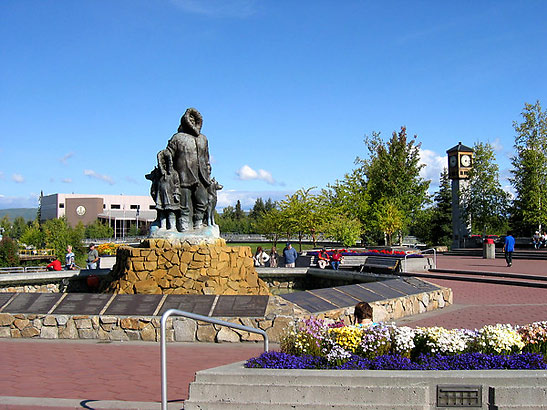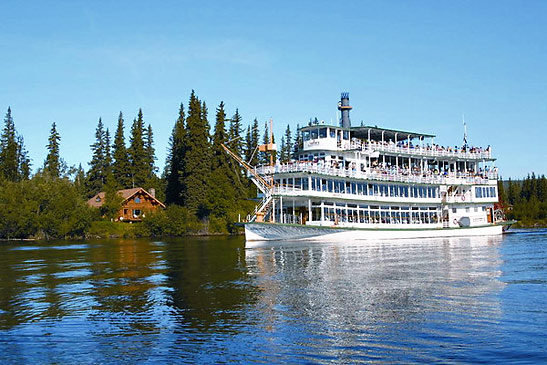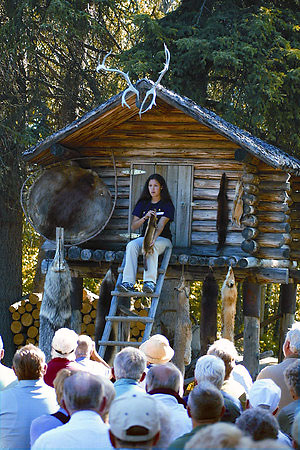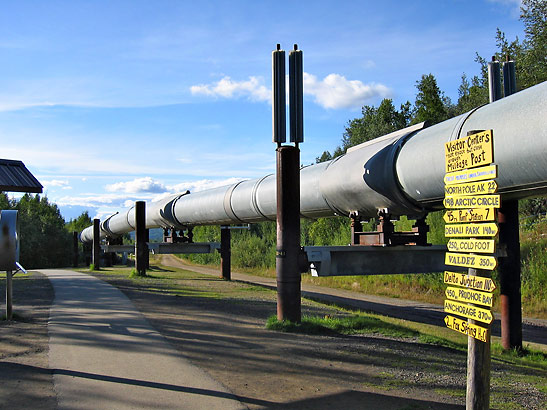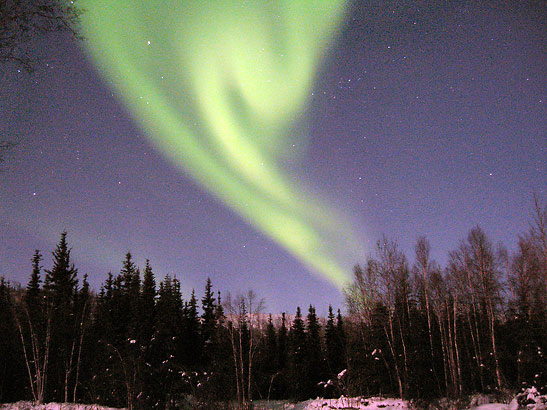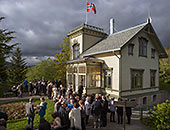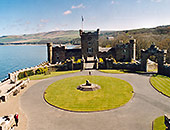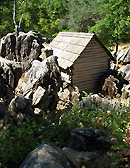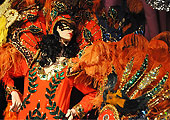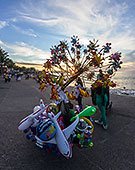 |
 |
|
 |

 A panoramic view of downtown Fairbanks along the banks of the Chena River. Credit: Mok Kumagai/FCVB
Eyes Wide Open in Fairbanks
A Trip to Alaska’s Mighty Interior Story by Ringo Boitano
Located 200 miles from the Arctic Circle and 120 miles from Denali National Park, crisscrossed by the Chena and Tanana Rivers, Fairbanks was established in 1902 as a mining town. Over one hundred years later, the small boomtown developed a diversified economy, serves as a services hub and is gateway to Alaska’s Interior and the Arctic. Today, with 98,000 residents and around 400,000 visitors annually, Fairbanks, Alaska’s “Golden Heart City,” is the bustling capital of the north and has the distinction of having the widest temperature swings in the US. Temperatures may fall to 65 degrees below zero in winter, and regularly hit 80 degrees above in summer. I was glad I had selected the month of June to visit, when the weather is moderate and there are over 21 hours of sunlight in a day. From midnight sun soft ball leagues and Denali National Park explorations to a visit to the Trans-Alaska Pipeline – a true marvel of ingenuity – Fairbanks offers a plethora of things to do and see.
On the top of my list was a cruise on the Tanana River, the largest glacier-fed river in the world, then a "wedding of the waters," where the Chena and Tanana Rivers meet. From the deck of the 156 feet long Riverboat Discovery Sternwheeler, I saw working Alaskan villages and uniquely built homes, designed to withstand the brutal winters. The river cruise also included a stop at an Athabascan Indian Village, where locals demonstrate traditional hide tanning, beading, fishing and dog sledding techniques. You quickly learn that a strong bond between man and dog is essential in order to survive during the long harsh winters. Survival, it seems, is the word that dominates the thoughts of the Athabascan people who live in the interior. Besides Denali, you can leave all roads behind to experience a one-of-a-kind adventure into the wild of two awesome national parks: Wrangell – St Elias. Find stunning glaciers, compelling mining history, and four mountain ranges and nine of North America’s 16 highest peaks tower within its 13.2 million acres. The river cruise also included a stop at an Athabascan Indian Village, where locals demonstrate traditional hide tanning, beading, fishing and dog sledding techniques. You quickly learn that a strong bond between man and dog is essential in order to survive during the long harsh winters. Survival, it seems, is the word that dominates the thoughts of the Athabascan people who live in the interior. Besides Denali, you can leave all roads behind to experience a one-of-a-kind adventure into the wild of two awesome national parks: Wrangell – St Elias. Find stunning glaciers, compelling mining history, and four mountain ranges and nine of North America’s 16 highest peaks tower within its 13.2 million acres.
If you are a fan of bird watching, the Tanana Valley is part of the migration path of about two-thirds of North America’s sandhill cranes. Over 200,000 birds pass through the Fairbanks area in the fall. The 1,800-acre Creamer’s Field Migratory Waterfowl Refuge is nearby with maintained trails. I’ve often wondered how locals emotionally survive the long months of darkness – from the end of November to the end of January – and the staggering cold winter months of ice and snow. After an insightful interview with Amy Geiger, Director of Communications for Fairbanks Convention & Visitors Bureau, I was informed that Fairbanksans actually embrace the winter months.
This is what Ms. Geiger had to say: “Winter in our extraordinary little snowy paradise. Not to mention that there are always a multitude of other winter activities, celebrations and sporting events happening during our energy filled winter season. Skiing, ice skating, snowmobiling, snow shoeing, ice fishing, curling, tubing and ice hockey abound. Challenge the snow-capped hills or birch laden trails, mush a team of huskies across the wilderness, see three ton pieces of ice being turned into works of art. Journey above the Arctic Circle, visit Santa in the North Pole or discover the incredible warmth of an Alaskan hot spring at the end of an adventure filled day.” Remind me to put a winter in Fairbanks on my bucket list. For further information, log on to www.explorefairbanks.com. Related Stories: |
|
| ||||
|
| ||||
|
| ||||
This site is designed and maintained by WYNK Marketing. Send all technical issues to: support@wynkmarketing.com

|






